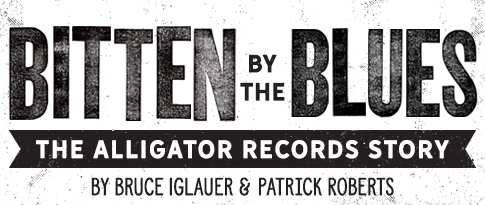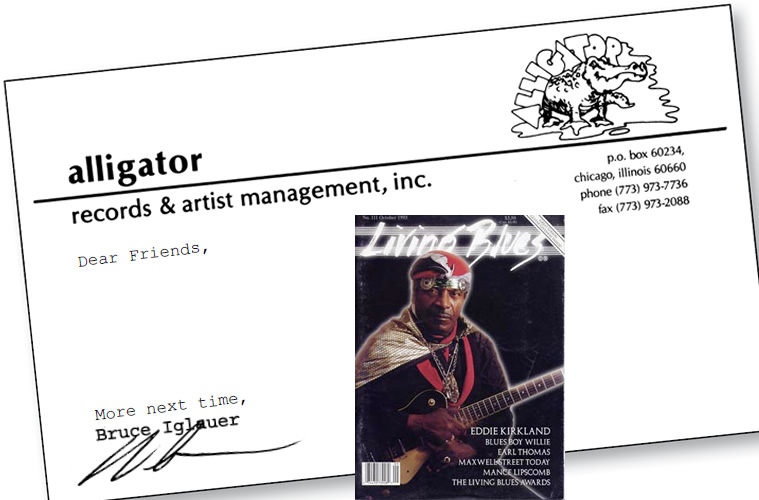Dear Friends
Before I start rambling on about our upcoming releases and colorful past, I want to take a moment to say goodbye to Lefty Dizz, whose funeral was last night. Lefty never recorded for Alligator, though he did tour as Hound Dog Taylor’s guitarist during the last months of Hound Dog’s career. Lefty was a fixture on the Chicago blues scene –a flamboyant but deeply rooted blues guitarist and vocalist (who sometimes let his natural showmanship overwhelm his music), a fine songwriter (’’Bad Avenue” has become a standard here) and a sweet guy who just loved to jam. Lefty was one of those musicians who would show up at someone else’s gig any night he didn’t have one of his own, just to make music with his friends. I had known Lefty since 1969, when he was backing Junior Wells at the Blue Flame. He was one of the most outgoing and honestly friendly of all the bluesmen in town. He was also a handy man to have on your side in a pinch, as I found out one night at Pepper’s. A larger than life guy with a larger than life heart. He wasn’t famous, but he was a vital member of Chicago’s blues community, and he will be sorely missed.
I’ve been in the studio mixing Koko’s new album, “Force of Nature” (should be out in November) and mastering a fine new release by Steady Rollin’ Bob Margolin, who came to me with a new album he produced himself that was just too good to pass up. As many of you know, Bob toured for eight years with Muddy Waters, studying with the master, before starting his own band. He’s based in North Carolina but he tours nationwide, carrying on the 1950s blues tradition (including terrific slide playing) with his own personal brand of energy and humor. Guests on the new album, “Down In The Alley,” .include Nappy Brown, John Brim and Ronnie Earl. Like our new Billy Boy Arnold album, Bob’s record is one that any fan of real Chicago-style blues won’t want to miss.
I was telling you last time about taking Son Seals into the studio for his most challenging album, “Chicago Fire.” With my tight budgets, we had only two nights to cut all the tunes (minus the horns, because their parts had become so complex we knew we had to concentrate on them, so we decided to cut their parts on an overdub). Son brought the band into the studio ultra-rehearsed but, as often happens, arrangements began to change when we heard the songs back on tape. Son likes to cut just like he performs… with all the solos and vocals done live. But he also likes to keep everything changeable, just like on the bandstand. For example, at the end of the second monologue while the band grooved on, having so much fun listening to Son’s tongue-in-cheek rap that they almost couldn’t keep playing. Some of the songs were too R&B for the hard core blues fans, plus it was the first album where the cover didn’t portray him bathed in sweat! Over the years it’s become one of his classics, but it was a bit too “cutting” edge for its time.
More later,
Bruce Iglauer

